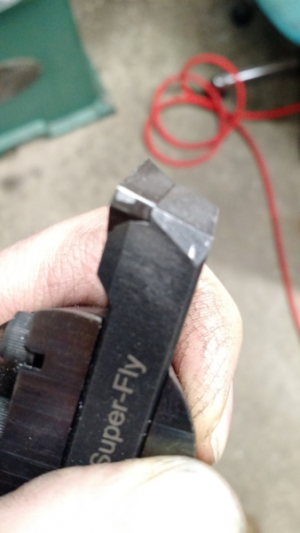I made my own cutter body and bought the tool bar for SEHT Insert.
My surface finish has never been very good. Although bright and shiny there is a small amount of ripples on every cut. The back cut takes the ripples out for the most part if the mill is trammed perfectly. Anyway I noticed the wear under a new insert I put in. I'm wondering if the wear is indicative of some small amount of incorrect angle when I made it.
Sorry the pic is not very good.

My surface finish has never been very good. Although bright and shiny there is a small amount of ripples on every cut. The back cut takes the ripples out for the most part if the mill is trammed perfectly. Anyway I noticed the wear under a new insert I put in. I'm wondering if the wear is indicative of some small amount of incorrect angle when I made it.
Sorry the pic is not very good.


